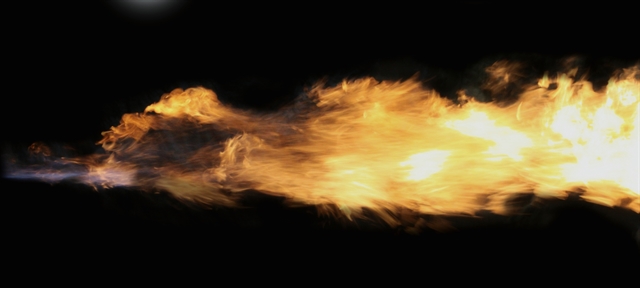Iron solutions from Linde
We provide innovative gas application technologies for iron melting and iron casting.

Oxygen and oxyfuel combustion systems play a key role in iron production in both cupola and rotary furnaces. Oxygen enrichment or oxygen lancing in cupola furnaces leads to increased productivity and flexibility as well as reduced coke rates, blast air and off-gas. In rotary furnaces, oxyfuel is sometimes the only way to produce iron economically.
We developed our HIGHJET family to enrich combustion air with oxygen in an iron melting furnace. This technology allows you to increase your production rate significantly. To enable even higher furnace pull rates and improved melting results, HIGHJET also supports oxygen lances at the tuyeres of your cupola furnace.
Highlights
• Typical savings of EUR 5–6/t of cast iron
• Up to 20% increase in melt rate
• Up to 20% coke reduction
• Ability to vary the charge recipe to optimise your cost structure
• Reduction in off-gas volume by up to 30%
HIGHJET® TDI is an oxygen technology based on HIGHJET® that allows you to safely increase the share of oxygen used per tonne of liquid iron. It converts pressure to velocity in its jet nozzles, so that additional combustion air is mixed with the oxygen stream. This leads to a fundamental change in the gas flow conditions within the cupola furnace. In the horizontal direction, the velocity increases, but the stack velocity, in the vertical direction, decreases. It positions the main combustion and melting area into the middle of the cupola shaft. This shift offers a number of benefits. Improved heat efficiency contributes to lower coke consumption, increased production rates and a higher temperature of the tapped iron.
Highlights
• Typical savings of EUR 6-10/t of cast iron
• Up to 30% increase in melt rate
• Up to 20% coke reduction
• Ability to vary the charge recipe to optimise cost structure
• Reduction in off-gas volume by up to 30%
• Faster heat-up time
Safe and efficient transfer of liquid iron from the melt shop to the casting line is important to achieve high-quality casting products. Properly conditioned iron in well heated transfer ladles plays an important role in achieving this target. Oxyfuel-heated ladles offer an efficient way of maintaining transfer heat.
OXYGON® 400 is a ladle preheating system that utilises flameless oxyfuel combustion to heat transfer and holding vessels for hot, liquid metal between melting and casting operations.
Highlights
• Shorter heating times and greater capacity
• Up to 55% reduction in fuel consumption and CO₂ emissions
• Extended vessel refractory lining life
OXYGON® XL uses the same technology as OXYGON® 400 but is equipped with a 1.5 MW burner suitable for vessels with capacities between 30 and 150 tonnes.
How does it work?
An OXYGON® XL plug&play system is mounted in the vessel lid and the accompanying control system automatically controls the combustion processes, seamlessly switching between traditional oxyfuel and complete flameless combustion.
Benefits of OXYGON® XL
• Ensured and consistent ladle temperature
• Maximising refractory lifetime through controlled combustion
• Increased energy efficiency and lower emissions
• Reduced number of ladles in operation